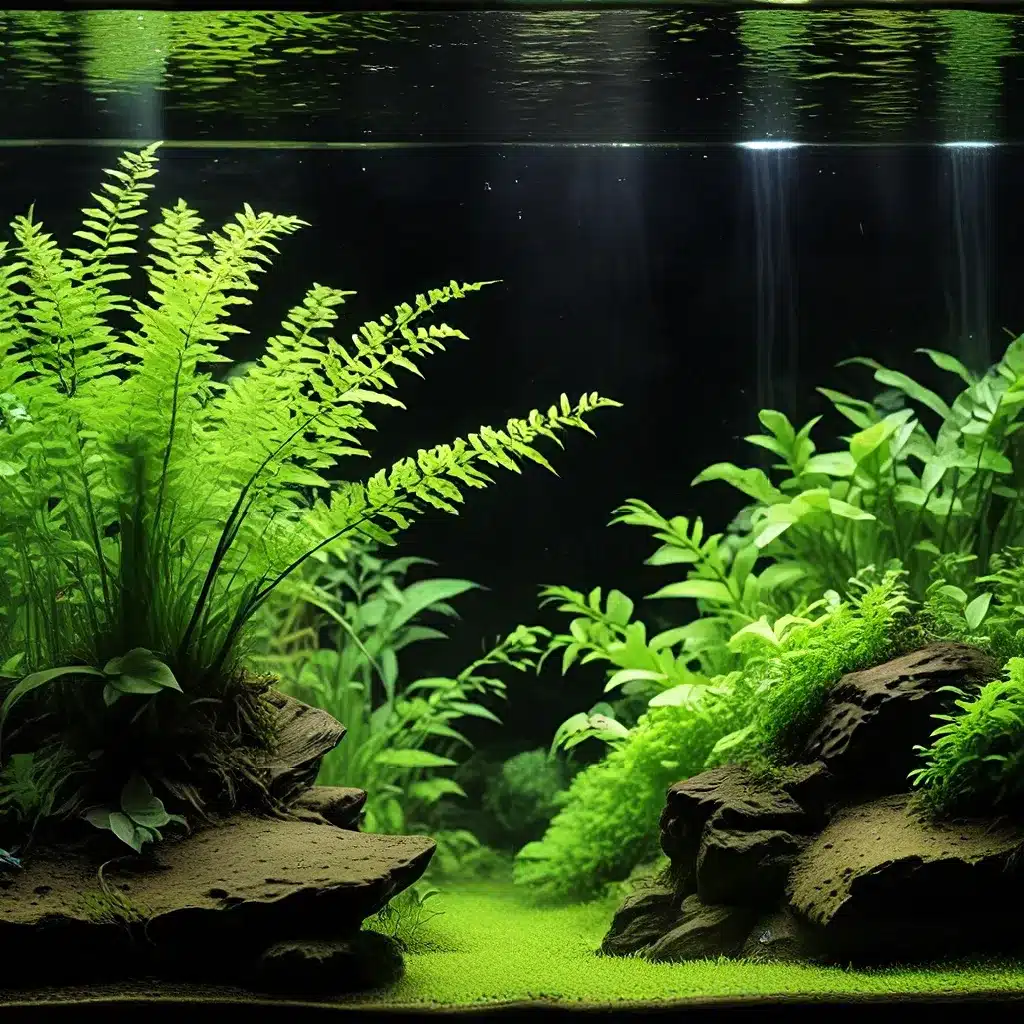
Unlocking the Power of Aquarium Lighting
Aquarium lighting is a crucial component in the success of a planted tank. The right lighting spectrum, intensity, and duration can make all the difference in promoting healthy, vibrant plant growth and creating a stunning underwater ecosystem. In this comprehensive guide, we’ll explore the various lighting strategies and techniques that aquarists can employ to achieve the perfect lighting setup for their planted aquariums.
Understanding the Importance of Aquarium Lighting
Aquarium lighting is the foundation of a thriving planted tank. It serves as the primary energy source for photosynthesis, the process that allows aquatic plants to convert light, carbon dioxide, and water into the necessary nutrients for growth. Without the proper lighting, even the most meticulously designed aquascape will struggle to reach its full potential.
The spectrum, intensity, and duration of the lighting are all critical factors that must be carefully considered. Different plant species have varying light requirements, and striking the right balance is essential for creating a harmonious and visually appealing aquatic environment.
Exploring the Spectrum of Aquarium Lighting
When it comes to aquarium lighting, the spectrum of light is a crucial consideration. Plants primarily utilize the red and blue wavelengths of the visible light spectrum for photosynthesis. These wavelengths are often referred to as the “photosynthetically active radiation” (PAR) range.
Research suggests that a balanced spectrum, with a mix of red and blue light, is the most effective for promoting robust plant growth and coloration. Too much or too little of either wavelength can lead to imbalances and suboptimal plant health.
To achieve this balance, aquarists often turn to specialized aquarium lighting solutions, such as LED or T5 fluorescent fixtures. These lighting systems are designed to emit the precise spectrum of light that aquatic plants require, ensuring that your aquascape thrives.
Optimizing Lighting Intensity for Planted Tanks
In addition to the light spectrum, the intensity of the lighting is another critical factor in the success of a planted aquarium. Different plant species have varying light intensity requirements, and it’s essential to match the lighting to the needs of your specific plants.
Generally speaking, low-light plants can thrive with lower lighting intensities, while high-light plants require more intense illumination to meet their photosynthetic needs. Striking the right balance is crucial, as too much or too little light can lead to algae growth, plant stunting, or other undesirable outcomes.
Aquarists can use a light meter or PAR (Photosynthetically Active Radiation) sensor to measure the light intensity at different depths in their aquarium. This information can then be used to fine-tune the lighting setup, ensuring that each plant species receives the optimal amount of illumination.
Balancing Lighting Duration for Optimal Plant Growth
The duration of aquarium lighting is another important factor to consider. Plants require a specific number of hours of light each day to thrive, and this can vary depending on the species. Generally, most aquatic plants do well with a lighting schedule of 8-12 hours per day.
Maintaining a consistent lighting schedule is crucial, as fluctuations in the duration of light exposure can stress the plants and lead to algae growth or other imbalances in the aquarium ecosystem.
Aquarists can use programmable lighting controllers or timers to ensure that their aquarium lighting remains consistent and on schedule. This level of control and precision can make a significant difference in the overall health and appearance of a planted tank.
Incorporating Supplementary Lighting for Specific Needs
While the primary aquarium lighting is the foundation of a planted tank’s success, some aquarists may choose to incorporate supplementary lighting to address specific needs or goals.
For example, some hobbyists may use additional LED or fluorescent strips to target specific plant species that require more intense lighting or a particular spectrum. This can be especially useful in larger aquariums or setups with varied plant species and lighting requirements.
Similarly, aquarists may utilize grow lights or other specialized lighting fixtures to promote the growth of aquatic mosses, carpeting plants, or other low-light-demanding species. By tailoring the lighting to the specific needs of the plants, aquarists can ensure that every aspect of the aquascape thrives.
Achieving the Perfect Aquarium Lighting Balance
Striking the right balance between spectrum, intensity, and duration of aquarium lighting is the key to creating a thriving planted tank. By carefully considering the unique needs of each plant species and tailoring the lighting setup accordingly, aquarists can unlock the full potential of their aquascapes.
Whether you’re a seasoned aquarist or just starting your planted tank journey, understanding the importance of aquarium lighting and the strategies to optimize it is a crucial step in ensuring the long-term success and visual appeal of your underwater oasis. By visiting our website, you can explore a wealth of resources and expert advice to help you achieve the perfect lighting setup for your planted aquarium.

